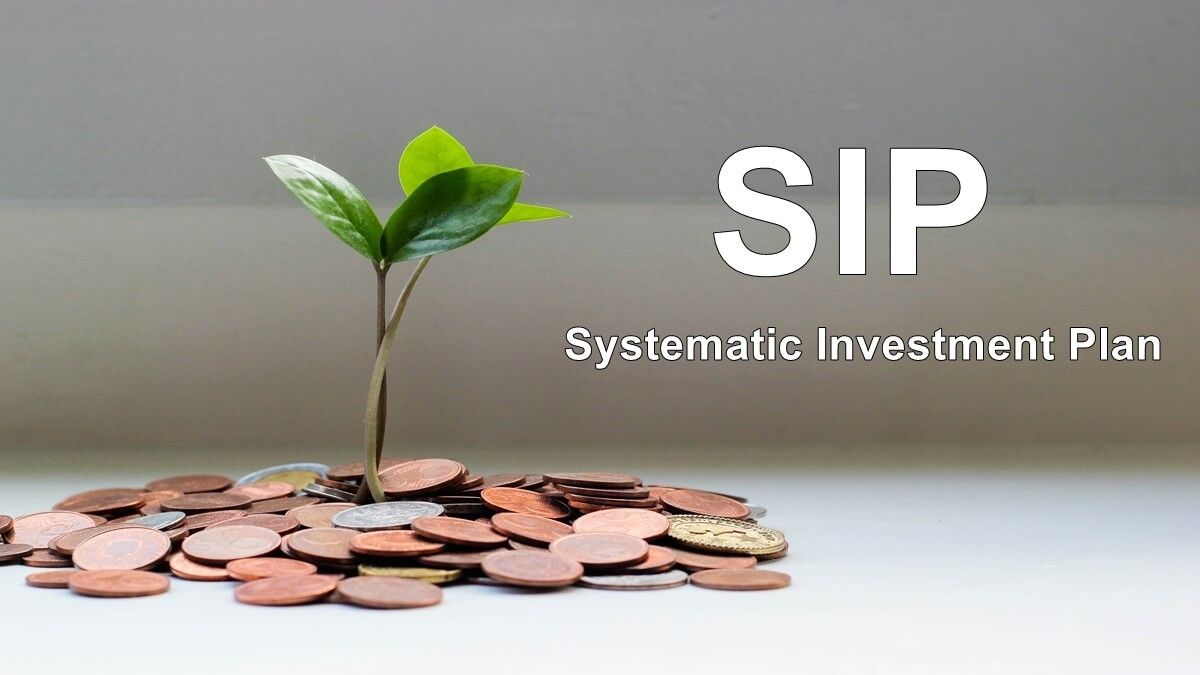Income investing is a strategy focused on generating regular income from investments, rather than seeking high capital appreciation. This approach is particularly appealing to retirees, conservative investors, or those seeking to supplement their income streams. However, like any investment strategy, income investing comes with its own set of advantages and disadvantages.
Key Takeaways
- Income investing focuses on generating regular income through dividends, interest, and other income-producing assets.
- Advantages include steady cash flow, lower volatility, and diversification.
- Disadvantages encompass lower growth potential, interest rate sensitivity, and inflation risk
- Assessing your financial goals, risk tolerance, and investment horizon is crucial in determining if income investing is appropriate for you.
- Diversification and informed decision-making can help mitigate risks associated with income investing.
Understanding Income Investing

Income investing involves selecting investments that provide regular income payments, such as dividends from stocks, interest from bonds, or rental income from real estate. The primary goal is to create a steady cash flow, which can be used to cover living expenses or reinvested to grow wealth over time
What is Income Investing?
In today’s complex financial landscape, the pursuit of wealth and financial security has taken many forms. Among the most enduring and widely respected approaches is income investing—a strategy centered on generating consistent, reliable cash flow from investments rather than solely focusing on capital gains. The question “Is income investing the right strategy for you?” is increasingly relevant as investors seek to balance risk, return, and financial goals in an environment marked by economic uncertainty, fluctuating markets, and changing interest rates.
This comprehensive article delves deeply into the principles, benefits, risks, and practical considerations of income investing. It is designed to serve as a thorough resource for investors across all life stages—whether you are a young professional beginning your investment journey, a mid-career individual planning for the future, or a retiree seeking steady income to support your lifestyle.
At its core, income investing is about creating a stream of cash flow from assets that pay dividends, interest, or rental income. Unlike growth investing, which aims to maximize capital appreciation often through volatile stock price movements, income investing prioritizes steady, predictable income that can either supplement your living expenses or be reinvested to compound wealth over time.
Why Consider Income Investing?
Income investing has gained renewed attention amidst volatile stock markets, low bond yields, and the challenges posed by inflation. For retirees or those approaching retirement, the ability to draw on stable income can provide peace of mind and financial independence. For younger investors, building a foundation of income-generating assets can enhance diversification and offer resilience during market downturns.
Readers will gain insight into how these vehicles work, their advantages, drawbacks, and how to evaluate their suitability based on factors like yield, risk, tax implications, and market conditions.
Key Considerations for Investors

Understanding income investing involves more than selecting high-yield assets. This article details critical concepts such as:
- How to assess yield versus total return to avoid “yield traps.”
- The impact of interest rate changes on bond prices and income sustainability.
- Risks including inflation erosion, credit defaults, and dividend cuts.
- The importance of diversification to mitigate concentration risks.
- Strategies to build, maintain, and rebalance a portfolio tailored to your unique goals and risk tolerance.
Income Investing Across Life Stages
Financial needs evolve, and so should your approach to income investing. This article addresses how your investment strategy should adapt—from growing income streams in early and mid-career years to preserving and drawing income in retirement.
Tax Efficiency and Income Investing
Taxes can significantly impact your net income from investments. This guide explains the nuances of dividend and interest taxation, the benefits of tax-advantaged accounts like IRAs and 401(k)s, and how municipal bonds and other vehicles can optimize tax outcomes.
The Changing Landscape of Investing
The investing environment today is drastically different from decades past. Traditional pension plans are waning, and the responsibility for securing retirement income now lies largely with individuals. Coupled with prolonged low-interest rate policies, many fixed-income investments no longer offer the returns they once did, prompting investors to seek creative solutions that generate meaningful income without excessive risk.
Income investing offers a compelling path forward—one that focuses on assets providing steady dividend payouts, bond interest, or rental income—to create a reliable financial foundation. Yet, it’s critical to appreciate that not all income investments are created equal. This guide rigorously examines the spectrum of income-producing instruments, from classic dividend stocks and government bonds to alternative investments such as real estate investment trusts (REITs), master limited partnerships (MLPs), annuities, and even peer-to-peer lending platforms.
Practical Guidance and Tools
Beyond theory, the article offers actionable advice on building an income portfolio, avoiding common pitfalls, and leveraging tools like dividend reinvestment plans (DRIPs), bond ladders, and income-focused ETFs. Real-world case studies illustrate how different investors apply income strategies to meet their goals.
Balancing Income and Growth: The Strategic Dilemma
Income investing is often contrasted with growth investing, and this article thoughtfully examines how many investors benefit from blending the two approaches. It discusses the psychology of income investing—the appeal of regular payouts that can reduce anxiety during downturns—as well as the potential cost of forgoing higher growth.
Risk Management and Inflation Protection
The guide emphasizes that income investing is not without risk. It thoroughly analyzes:
- Interest rate risk, which can depress bond prices and affect income streams.
- Inflation risk, which can erode the real value of fixed payments.
- Credit and default risk, especially for corporate bonds and alternative lenders.
- Concentration risk, where overreliance on a single income source can jeopardize portfolio stability.
Readers will learn strategies to mitigate these risks through diversification, regular portfolio review, and appropriate asset allocation.
Practical Steps to Build Your Income Portfolio
The article doesn’t just theorize—it provides actionable advice. From setting realistic income targets and defining investment horizons to choosing the right mix of assets, readers receive a step-by-step roadmap tailored to various investor profiles—from cautious retirees to aggressive younger investors seeking passive income streams.
Conclusion and Key Takeaways
Finally, the article synthesizes the information into clear conclusions, helping you decide if income investing aligns with your financial situation, preferences, and objectives. It emphasizes the value of professional advice and continual portfolio review to maximize the benefits of income investing.
This detailed description aims to prepare readers for a comprehensive, nuanced exploration of income investing, empowering them to make informed decisions that enhance financial security and long-term wealth
Dividend Stocks: Shares in companies that distribute a portion of their earnings to shareholders.
Bonds: Debt securities that pay interest over a fixed period.
Real Estate Investment Trusts (REITs): Companies that own or finance income-producing real estate.
Annuities: Financial products that provide a fixed income stream, typically used in retirement planning.
Peer-to-Peer Lending: Platforms that allow individuals to lend money to others in exchange for interest payments.

“Is Income Investing the Right Strategy for You?” is a comprehensive guide designed to help investors of all experience levels understand the fundamentals, advantages, and trade-offs of income investing. This article breaks down the income investing strategy—a method of building wealth by focusing on consistent income streams from assets like dividends, bonds, and real estate—rather than seeking explosive growth through capital appreciation alone.
With today’s economic climate marked by market volatility, rising inflation, and an aging population increasingly focused on financial security and passive income, income investing has re-emerged as a strategic solution for preserving capital while generating regular returns.
Throughout this article, readers will learn:
- What income investing is and how it compares to growth investing
- The wide array of income-generating assets, from dividend-paying stocks and bonds to REITs and annuities
- How to evaluate income investments using key financial metrics like yield, payout ratios, and credit ratings
- Strategies for building a diversified, income-focused portfolio that suits different financial goals, risk profiles, and life stages
- Potential risks such as inflation erosion, dividend cuts, and interest rate changes—and how to mitigate them
- Real-world examples and case studies to illustrate how income investing works in practice
You’ll also explore whether income investing can truly support retirement planning, early financial independence (FIRE movement), or just a reliable side income. Designed with depth and clarity, the article includes FAQs, a detailed conclusion, and a key takeaway section that wraps up the learnings in a digestible format.
Whether you’re a retiree looking for predictable income, a young professional curious about passive investing, or a seasoned investor rebalancing your strategy—this article will help you decide if income investing is the right path forward for your financial journey
Exploring Income Assets in Detail
A cornerstone of the article is its deep dive into the many types of income investments available today. Readers will gain:
- A nuanced understanding of dividend stocks, including how to assess the quality of dividends, interpret payout ratios, and avoid pitfalls like chasing unsustainable yields.
- Insight into bond markets, exploring the trade-offs between government and corporate bonds, duration risk, credit quality, and strategies like bond laddering to optimize income and reduce interest rate exposure.
- An exploration of real estate income, distinguishing between direct rental properties and publicly traded REITs, with discussions on liquidity, taxation, and market cycles.
- Coverage of less conventional income streams such as MLPs and annuities, including their benefits, drawbacks, tax considerations, and role in a balanced portfolio.
Advantages of Income Investing
- Steady Cash Flow: Provides regular income, which can be especially beneficial for retirees or those needing consistent cash flow.
- Lower Volatility: Income-generating investments, like bonds, tend to be less volatile than growth stocks
- Diversification: Including income investments in a portfolio can reduce overall risk and enhance returns.
- Tax Benefits: Certain income investments, like municipal bonds, may offer tax advantages.
Disadvantages of Income Investing
- Lower Growth Potential: Income investments typically offer lower capital appreciation compared to growth stocks.
- Interest Rate Sensitivity: Rising interest rates can negatively impact the value of bonds and other fixed-income investments.
- Credit Risk: Investments like corporate bonds carry the risk of issuer default.
- Inflation Risk: Fixed income may not keep pace with inflation, eroding purchasing power over time
Is Income Investing Right for You?

Determining if income investing aligns with your financial goals depends on several factors:
- Financial Goals: If you seek regular income for living expenses or to supplement retirement income, income investing may be suitable.
- Risk Tolerance: If you prefer lower-risk investments and are willing to accept moderate returns, income investing aligns well.
- Investment Horizon: For those with a shorter investment horizon, income investing can provide stability and liquidity.
- Tax Considerations: Certain income investments circumstances offer tax advantages, which can be beneficial depending on your tax situation.
Also Read: How Do You Build Wealth with Long-Term Growth Investments?
Conclusion
Income investing can be a valuable strategy for those seeking regular income and lower volatility. However, it’s essential to understand the associated risks and ensure that income investments align with your overall financial goals and risk tolerance. Consulting with a financial advisor can provide personalized guidance tailored to your individual
However, it may not be ideal for investors with long time horizons who prioritize capital appreciation or who can withstand greater market fluctuations in pursuit of higher long-term gains.
Ultimately, the decision to pursue an income investing strategy should be informed by a deep understanding of your personal financial goals, current life stage, and risk profile. A diversified portfolio that balances income-producing assets with growth investments often provides the best of both worlds—regular cash flow and long-term wealth growth.
FAQs
What is the difference between income investing and growth investing?
Income investing focuses on generating regular income, while growth investing aims for capital appreciation.
Can I rely solely on income investments for retirement?
While income investments can provide steady cash flow, it’s advisable to have a diversified portfolio to balance income and growth.
What are the risks associated with income investing?
Risks include interest rate fluctuations, credit risk, inflation, and market volatility
How can I mitigate risks in income investing?
Diversifying investments, conducting thorough research, and staying informed about market conditions can help mitigate risks.
Are dividend stocks a good investment?
Dividend stocks can be a good investment for those seeking regular income, but it’s important to assess the company’s financial health and dividend history.
What is a REIT?
A Real Estate Investment Trust is a company that owns or finances income-producing real estate, offering high dividend yields.
How do interest rates affect income investments?
Rising interest rates can decrease the value of existing bonds and fixed-income investments, as newer issues may offer higher yields.


